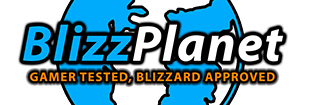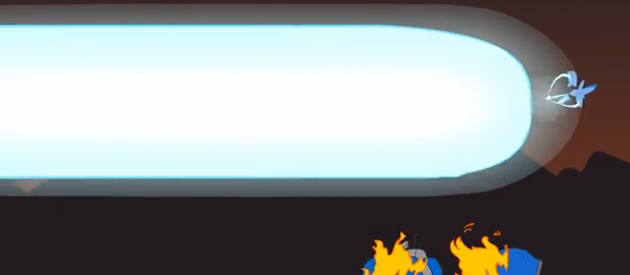 Our old-friend Bob Colayco (Blizzard Public Relations Manager) was interviewed by Games.On.Net to talk about the success and challenges of getting Starcraft II: Wings of Liberty into South Korean territory. With Bob was Chris Davey, the Senior Brand Manager for Blizzard in the Australia & New Zealand region.
Our old-friend Bob Colayco (Blizzard Public Relations Manager) was interviewed by Games.On.Net to talk about the success and challenges of getting Starcraft II: Wings of Liberty into South Korean territory. With Bob was Chris Davey, the Senior Brand Manager for Blizzard in the Australia & New Zealand region.
It hasn’t been as ground-breaking, as expected by Blizzard Entertainment, but Starcraft 1 has been so popular for so many years that it wasn’t exactly surprising.
It’s more about been consistent with their campaign to make this new robust product sink in and to slowly pave the way for the transition to Starcraft II. That’s no easy task, but we haven’t ever known Blizzard to sleep on its laurels. They have a strong team.
Bob Colayco didn’t talk about the cost of advertisement in South Korea nor a regional breakdown on sales, or concurrency. It is a policy of the game studios. I’d guess that type of talk has a better place during the quarter financial report than in an interview.
I don’t think anyone should expect Starcraft II to take off big time in South Korea in a matter of weeks or a month. Due to the popularity of the original Starcraft, this is more a matter of helping the community transition to a better game as a long-term goal.
Bob Colayco invited Games.On.Net to analyze the IGR gametrics which places Starcraft II and other Blizzard games within the Top 10 in IGR usage. Note that IGR usage doesn’t actually measure home usage, which makes IGR largely inaccurate and limited.
Blizzard is committed to support Starcraft II eSports in South Korea, heralded by GomTV and their GSL — to see a growth of interest among old-school Starcraft fans.
The interview also covers a delicate topic concerning the unfruitful negotiations with KeSPA Leagues the past three years, and reassures how satisfied Blizzard is in the present with how GomTV is proceding and its viewership growth. GomTV broadcasts both in korean and in english not only for South Korea territory, but for other foreign nations.
He also answered a couple of questions around LAN. The question was easily shrugged off. Everyone knows that Starcraft was a national catalyst for South Korea’s internet infrastructure to boom. All top games in South Korea are currently online games, rather than LAN games.
I personally see the logic there. In terms of United States, there is something big currently growing nationwide from the east and west coasts inward. It’s named 4G internet.
Not long ago, after my job departure I ended up attending a new internet provider conference which revealed how 4G WiMAX is expanding nationwide throughout the United States with up to 3-6Mbps downloads. Uploads up to 1.0 Mbps. No Preset Speed Cap. Unlimited data usage.
I am currently typing this article using one of these on-the-go mobile internet devices or portable Wi-Fi hotspots.
This is to be the new standard in internet technology. History in the making. No need for cables on the ground coast to coast, or waiting for the phone or CABLE company techs to install your internet setup at your home.
4G WiMAX is likely already in your area if you live in the eastern or western coast of United States. This is your new LAN of the 21th Century. Connected online at home and anywhere you go. Whether at 4G or 3G networks (if your device covers both) you are always online. It’s just a matter of a couple of years before most of United States gets 4G network coverage. Some of these devices allow up to six or 8 computers via wireless/WiFi modems.
Case # 1: Imagine you have a load of computers setup for a LAN tournament. Or each player brings their own computer or Laptop. The organizer plans this tournament at a place that has no internet connection. Some computers might have the latest patch, and others don’t. Very successful LAN, with a few players right on unable to play with other players.
During downtime, when you aren’t playing in this LAN tournament, you stare at the screen instead of browsing the internet. Fun times.
Case # 2: Most players bring in their own mobile WiFi hotspot device(s) and all computers download the latest patch simultaneously. All connected to Battle.net for achievements, and other eSport perks.
You are confident of a cheat-free environment. Battle.net and your portable WiFi Hotspot device are your new Always-Online LAN infrastructure.
Now that’s the new era. That’s the right stuff.
Read the two-pages interview with Bob Colayco and Chris Davey.
 Blizzard Quote: Blizzard Quote: |
||
|
games.on.net: So based on that, is it fair to say that StarCraft 2 has not been as successful in Korea as Blizzard had hoped? Or is just a matter of time? Bob: Yeah, it’s fair to say that it didn’t come out of the gates as well as we’d hoped. But we’re working on some things, such as the GSL with our partner GomTV, and some other initiatives to try and continue. There’s definitely a lot of interest there, we’re definitely in the top 10 as far as the played games in the IGR’s and we’re seeing some upward mobility there so we’re doing what we can to prop that up. | ||









I’m sorry, but no type of Internet connection EVER can be as fast as LAN.
LAN is a direct connection, while Internet isn’t. That’s the main reason because tournaments are played on LAN, and Blizzard uses LAN at its tournaments, with tat SC2 LAN license they have.
I’m not at all surprised that it didn’t come out of the gates like Blizzard hoped. They don’t have a good relationship with the Esports centers there at all. And I’m not surprised by that. They definitely burned some bridges in their attempts to get proper income from use of their product.
The lack of LAN is more of an issue for people who don’t want to buy an extra copy of the game to play with family. (like me).
I think its too early to comment on 4G, seeing as the standards for such a system haven’t even been finalized yet.